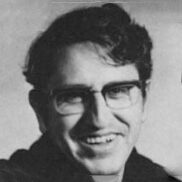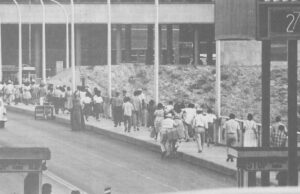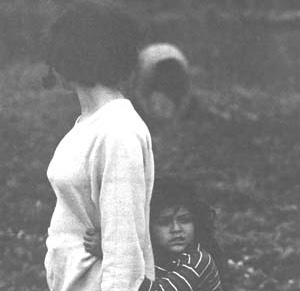Moises Sandoval
- 1977

Fellowship Title:
- The Latinization of the U.S.
Fellowship Year:
- 1977

Towards a More Open immigration Policy
A nation which for most of its history has welcomed all comers and which attributes its drive and creativity to the myriad cultures making up its national mosaic now seems to be increasingly drawn to a lifeboat ethic. Yet, there are many reasons why the drift and substance of U.S. immigration policy should be toward openness rather than toward creating a more closed society. Here are a few: Immigration is a positive rather than a negative phenomenon. Father Allan Figueroa Deck, S. J., a member of the Orange County (Calif.) Task Force on Illegal Aliens, points that immigration is the byproduct of our age’s internationalization and the gradual disappearance of divisions among people who previously had little to do with each other. He states that even in an age of scarcity, immigration is good. It arises out of the mutual needs of both rich and poor nations. The developing nations have difficulty generating enough jobs and the industrial nations generate bottom-level jobs critical to the functioning of society, which cannot be filled with citizens. Thus

Dawn Fades in the Barrios
OAKLAND, Calif.-The talk over Mexican food in the Fruitvale barrio here is pessimistic, almost wistful for the turbulent ’60s. Tony Valladolid, a young lawyer at Centro Legal de La Raza is reminiscing about those days: “The San Diego State administration building had burned down and we had about three or four good riots. But now that the (minority) programs are being cut back the Chicanos don’t know what to do. They no longer have the political awareness. They try to go through channels and it is ineffective.” The gist of the lunchtime conversation among the Centro Legal staff-including Ed Roybal Jr., the son of the congressman-is that life is not getting easier, but tougher, for Latinos. The lawyers have been trying with little success to get the Justice Department to investigate the case of Jose Barlow Benavides, killed in 1976 by a policeman who put a shotgun to his head as he frisked him. They say that the climate between the police and Latinos is not good and part of the problem is that Oakland
The Phantom Migrants
The Colorado Migrant Council reports that thousands of migrant farm workers earned so little last year that they were unable to return home after the harvest. Yet, the Colorado State Employment Service, which says that all migrants have returned home, will send recruiters in February through the barrios of El Paso, Laredo, Eagle Pass and Florida to recruit 600 migrants to come to Colorado’s Western Slope region to work in the fruit harvest next summer. The recruiting, transportation for the migrants and other costs will be paid with a $300,000 grant from the U.S. Department of Labor, the same agency which is the primary funding source for the Colorado Migrant Council. Such is the surrealistic quality of Colorado’s migrant picture. The various agencies dealing with farm workers cannot even agree on how many are in the state. The Colorado Migrant Council has one figure, the Employment Service another and the State Department of Agriculture a third. The estimates range from 50,000 to 10,000. Don MacMillan, spokesman for the Colorado State Employment Service, said his agency
The Decolonization of a City
SAN ANTONIO, Texas — Morale is low in the barrios of this city after a euphoric four years of great successes. On March 4, a $98 million capital improvements bond issue which had been turned into a test of strength between the largely inner city Mexican American majority — now 51 percent of the city’s 756,000 inhabitants — and the largely suburban North Side Anglos, went down in defeat. The vote signaled growing Anglo restiveness with the political gains made by Mexican Americans and blacks in the past four years through a group styled on the tactics of the late Saul Alinsky and called Communities organized for Public Service (COPS). So successful has COPS become that it is the model for similar groups starting up in Los Angeles, San Jose, El Paso and Houston. No question about it, this overgrown cow town is impaled on the horns of a struggle for power. It began in the early 1970s when the traditional landed, business and social elite was challenged by brash new developers, with the latter
Si Se Puede
The hispanic people in the United States have made tremendous advances in recent years. The gains are perhaps more of spirit than of substance, for indeed there is yet a long way to travel as a people. But there are many successes walking around today who were weighed by defeat and failure a relatively few years ago — men and women who have gone to college and made a place for themselves in government, industry or education; self-made leaders who have risen in the barrios; young militants who have successfully campaigned for their people, political leaders who have won election or high appointments and, most important, humble people in many callings who have in some way savored the sweet taste of accomplishment, perhaps for the first time in their lives. What impresses most is the spirit one finds in the people everywhere. I first became aware of it when I walked the picket lines with the farm workers in California. What struck me most about these men and women battling against such high odds was
